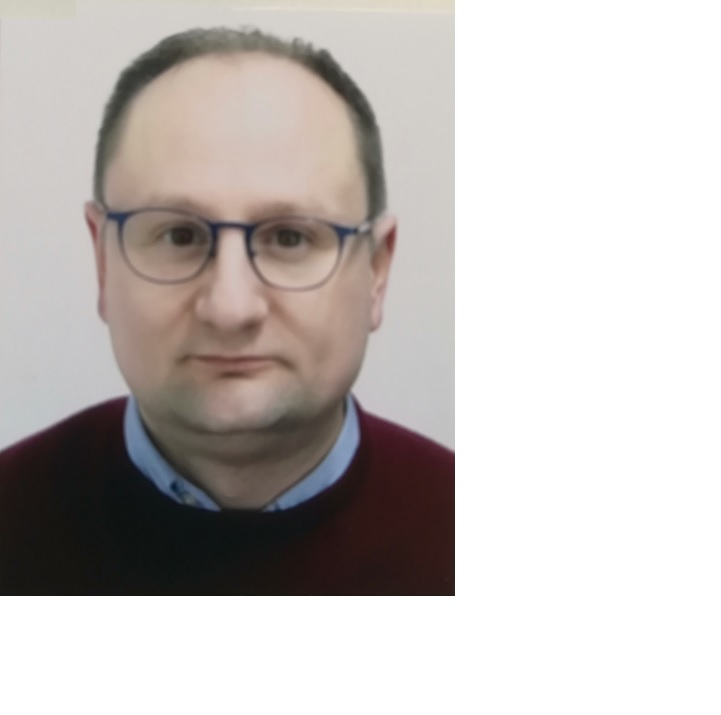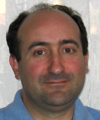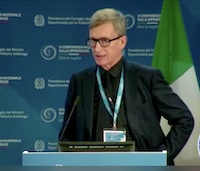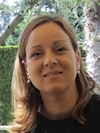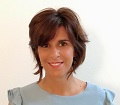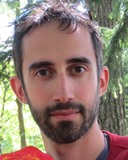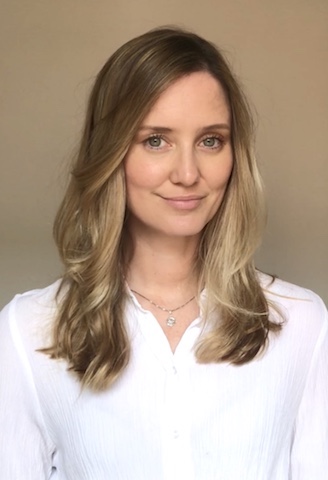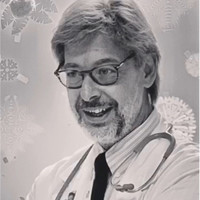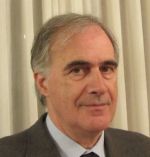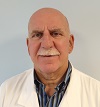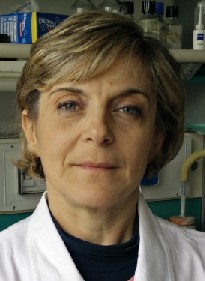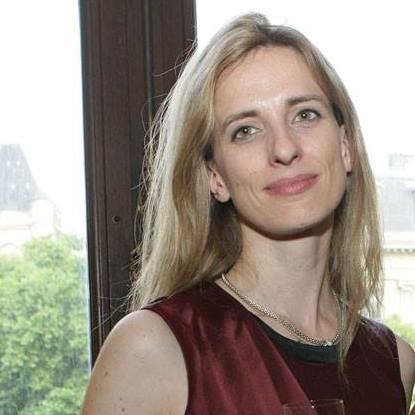Studying at the University of Verona
Here you can find information on the organisational aspects of the Programme, lecture timetables, learning activities and useful contact details for your time at the University, from enrolment to graduation.
Academic calendar
The academic calendar shows the deadlines and scheduled events that are relevant to students, teaching and technical-administrative staff of the University. Public holidays and University closures are also indicated. The academic year normally begins on 1 October each year and ends on 30 September of the following year.
Course calendar
The Academic Calendar sets out the degree programme lecture and exam timetables, as well as the relevant university closure dates..
| Period | From | To |
|---|---|---|
| Lezioni 2-3 anno 1 semestre TLB | Oct 5, 2020 | Nov 27, 2020 |
| Lezioni 1anno 1 semestre TLB | Oct 5, 2020 | Dec 4, 2020 |
| Lezioni 1-2-3 anno - 2 semestre TLB | Mar 1, 2021 | Apr 30, 2021 |
| Session | From | To |
|---|---|---|
| Sessione Esami invernale 1 anno | Jan 7, 2021 | Jan 29, 2021 |
| Sessione Esami invernale 2 e 3 anno | Feb 1, 2021 | Feb 26, 2021 |
| Sessione Esami Estiva 1-2-3 anno | Jul 1, 2021 | Jul 30, 2021 |
| Sessione Esami Autunnale 1-2-3 anno | Sep 1, 2021 | Sep 30, 2021 |
| Session | From | To |
|---|---|---|
| Sessione di Laurea Autunnale 2020/2021 | Oct 1, 2021 | Nov 30, 2021 |
| Sessione di Laurea Primaverile 2020/2021 | Mar 1, 2022 | Apr 30, 2022 |
| Period | From | To |
|---|---|---|
| Festa dell'Immacolata | Dec 8, 2020 | Dec 8, 2020 |
| Festività Santo Patrono | May 21, 2021 | May 21, 2021 |
| Description | Period | From | To |
|---|---|---|---|
| Tirocinio 3 anno 2020/2021 | Tirocinio 3 anno 2020/2021 | Oct 5, 2020 | Sep 30, 2021 |
| Tirocinio 2 anno -1 periodo 20/21 | Tirocinio 2 anno -1 periodo 20/21 | Dec 1, 2020 | Jan 29, 2021 |
| Tirocinio 1 anno -1 periodo 20/21 | Tirocinio 1 anno -1 periodo 20/21 | Feb 1, 2021 | Feb 26, 2021 |
| Tirocinio 1 anno - 2 periodo 20/21 | Tirocinio 1 anno - 2 periodo 20/21 | May 3, 2021 | Jun 30, 2021 |
| Tirocinio 2 anno -2 periodo 20/21 | Tirocinio 2 anno -2 periodo 20/21 | May 3, 2021 | Jun 30, 2021 |
Exam calendar
Exam dates and rounds are managed by the relevant Medicine Teaching and Student Services Unit.
To view all the exam sessions available, please use the Exam dashboard on ESSE3.
If you forgot your login details or have problems logging in, please contact the relevant IT HelpDesk, or check the login details recovery web page.
Should you have any doubts or questions, please check the Enrollment FAQs
Academic staff
 045 500 285
045 500 285
 marina.foroni@univr.it
marina.foroni@univr.it
 guido.martignoni@univr.it
guido.martignoni@univr.it
 anja.meyer@univr.it
anja.meyer@univr.it
 negrivr@tin.it
negrivr@tin.it
 bruno.sandini@aulss8.veneto.it
bruno.sandini@aulss8.veneto.it
Study Plan
The Study Plan includes all modules, teaching and learning activities that each student will need to undertake during their time at the University.
Please select your Study Plan based on your enrollment year.
1° Year
| Modules | Credits | TAF | SSD |
|---|
2° Year activated in the A.Y. 2021/2022
| Modules | Credits | TAF | SSD |
|---|
3° Year activated in the A.Y. 2022/2023
| Modules | Credits | TAF | SSD |
|---|
| Modules | Credits | TAF | SSD |
|---|
| Modules | Credits | TAF | SSD |
|---|
| Modules | Credits | TAF | SSD |
|---|
Legend | Type of training activity (TTA)
TAF (Type of Educational Activity) All courses and activities are classified into different types of educational activities, indicated by a letter.
Structure and Function of Biomolecules (2020/2021)
The teaching is organized as follows:
Learning outcomes
The Integrated Course of Structural and Functional Sciences of the Biomolecules intends to provide the basic knowledge of Chemistry and Biochemistry. In particular: - Knowledge of the scientific method and possible practical effects in laboratories. - Knowledge of the main concepts of General and Organic Chemistry. - Further attention to the notions of Organic Chemistry preparatory to Biochemistry. - Knowledge on the structure-function relationships of the main classes of biological macromolecules and on metabolic regulation at the molecular level. - Knowledge about the interconnections existing between the different biochemical processes and the energy transformations connected to them. At the end of the course, the student / student must demonstrate to have acquired terminologies and notions useful for a critical analysis of chemical processes and vital biochemical phenomena in order to achieve autonomy of critical evaluation of the processes themselves, and appreciate their applicability in laboratory practice. MODULO CHIMICA E PROPEDEUTICA BIOCHIMICA The Chemistry course provides knowledge of: - The scientific method, underlined to explain phenomena occurring in the laboratories. - The main notions of General and Organic Chemistry. - Further attention is spent for notions, especially of Organic Chemistry, which are preparatory for the study of the Biochemistry. At the end of the Course, students should demonstrate to have acquired the proper scientific terms and notions in order to critically and autonomously evaluate the chemical processes and their application in the laboratory practice. MODULO BIOCHIMICA. The course is mostly focused on the relationship between structure and function of biological macromolecules and the main metabolic pathways in which they are involved. The fundamental objective is to stimulate the student's interest in biomolecular science by highlighting interconnections between biochemical processes and related energetics.At the end of the Course the student should demonstrate to have acquired the proper scientific terms and notions in order to critically and autonomously evaluate the biochemical processes of life.
Program
CHEMISTRY
-Matter: aggregation states, energy, intensive and extensive properties.
-Atom: atomic theory, atomic weight. Inside the atom: protons, neutrons, electrons. Orbital wave function. Quantum numbers and periodic properties. Connection between micro- and macroscopic levels: the mole.
-Chemical bond: ionic, covalent, weak bonds: hydrogen bond and hints of hydrophobic interactions. The ‘noble gas’ or octet rule.
-States of the matter: The law of ideal gases; real gases; vapour pressure; liquids and solutions; hints of solids.
-Chemical reactions: syntheses, swapping; acid-base and pH, redox reactions; examples of biochemistry redox reactions.
-Chemical equilibrium: in aqueous solution or not; the amphoteric nature of water. Connection between Keq and deltaG.
-Thermodynamics and kinetics: principles of thermodynamics and spontaneous, or not, reactions. Kinetic theory of collisions, activation energy and catalysis.
-Organic chemistry: the chemistry of carbon; hybridation of the carbon orbitals; stereochemistry; structure, nomenclature, functional groups of the oxygenated organic compounds, and reactivity of them. Aromatic compounds: structure and reactions. Nitrogen compounds and and most important reactions.
BIOCHEMISTRY
- Structure and function of proteins: amino acids; peptide bond; structural levels of proteins; fibrous proteins and globular proteins; hemoglobin and myoglobin; hemoglobin variants; classification, function and regulation of enzymes. Chromatography.
- Bioenergetics: metabolism, chemical transformations in the cell; thermodynamics; ATP as energy exchanger; oxidation/reductions.
- Structure and metabolism of carbohydrates; mono- and disaccharides; polysaccharides. Glycolysis and its regulation. Alcoholic and lactic fermentation.. Gluconeogenesis. Penthose phosphate pathway. structure, function and metabolism of glycogen.
- Oxidative decarboxylation of pyruvate: synthesis of AcetylCoA. Citric acid cycle; electron transport chain and oxidative phosphorylation; ATP synthesis.
- Structure and metabolism of lipids: structural lipids and biological membranes; lipids transport; lipids digestion and fatty acids beta-oxidation; hints on fatty acids biosynthesis
- Amino acid metabolism; transamination and oxidative deamination; urea cycle; metabolism of the carbon chain.
Frontal teaching is the exclusive method adopted in this Course.
Bibliography
| Author | Title | Publishing house | Year | ISBN | Notes |
|---|---|---|---|---|---|
| Bertoldi M, Colombo D, Magni F, Marin O, Palestini P. | Chimica e Biochimica (Edizione 1) | EdiSES | 2015 | 978 88 7959 878 1 | |
| M Samaja e R.Paroni | Chimica e biochimica. Per le lauree triennale dell'area biomedica | Piccin | 2016 | ||
| A. Fiecchi, M. Galli Kienle, A. Scala | Chimica e propedeutica biochimica | Edi-Ermes | |||
| Martin S. Silberberg - Patricia Amadeus | CHIMICA La natura molecolare della materia e delle sue trasformazioni (Edizione 4) | McGraw-Hill Education, Italy | 2019 | 88-386-9539-3 | |
| ALLINGER ed altri | CHIMICA ORGANICA | Zanichelli, Bologna | |||
| D. Voet, J. G. Voet, C.W. Pratt | Fondamenti di Biochimica (Edizione 4) | Zanichelli | 2017 | 9788808420961 | |
| David L Nelson, Michael M Cox | Introduzione alla Biochimica del Lehninger | Zanichelli | 2018 | ||
| Luciano BINAGLIA, Bruno GIARDINA | CHIMICA e PROPEDEUTICA BIOCHIMICA (con CD-ROM) | Ediz. Mc Graw-Hill | |||
| Brown, LeMay, Bursten, Murphy, Woodward, Stoltzfus | Fondamenti di Chimica (con ebook) (Edizione 4) | EdiSES | 2018 | 978-88-7959-853-8 | |
| P.C. CHAMPE, R.A. HAEVEY, D.R. FERRIER | Le basi della biochimica | Zanichelli | 2015 |
Examination Methods
The exam modalities, unchanged with respect to the past ones, are reported here below. Certainly, the unpredictable conditions induced by the pandemic COVID-19 will probably induce some modifications that will be communicated promptly.
To pass the Chemistry module test, the students must demonstrate they acquired the comprehension and knowledge of the program topics. Furthermore, they must show the capability to expose their reasoning in a critical and precise manner, by using an appropriate scientific language.
The assessment of the subjects' learning in the Chemistry and Biochemistry modules is carried out through a joint oral test. The exam is preceded by a short written test consisting of 7 multiple-choice Chemistry Questions and 7 Biochemistry Multiple Questions. This test gives access to the oral exam only if the correct answers are at least five for each subject and remains valid for the entire academic year.
The final score will be expressed in thirtys (/30). The examination will be validated with a minimum score of 18/30.
6 examination appeals are foreseen in the whole Academic Year: 2 in the Winter Session, after the Course ending, 2 in the Summer Session, and 2 in the Autumn session.
Career prospects
Module/Programme news
News for students
There you will find information, resources and services useful during your time at the University (Student’s exam record, your study plan on ESSE3, Distance Learning courses, university email account, office forms, administrative procedures, etc.). You can log into MyUnivr with your GIA login details: only in this way will you be able to receive notification of all the notices from your teachers and your secretariat via email and soon also via the Univr app.
Gestione carriere
Risultati di apprendimento attesi
Orario Lezioni
Si pubblicano gli orari definitivi delle lezioni relativi al 2° semestre dell'A.A. 2023/2024:
La frequenza in aula delle lezioni è obbligatoria ed è prevista per tutti e tre gli anni di corso.
1 ANNO: Aula B lente se non diversamente indicato
2-3 anno Aula F biologici
Documents
| Title | Info File |
|---|---|
|
|
pdf, it, 35 KB, 26/09/23 |
|
|
pdf, it, 32 KB, 22/02/24 |
|
|
pdf, it, 31 KB, 29/09/23 |
|
|
pdf, it, 33 KB, 27/02/24 |
|
|
pdf, it, 28 KB, 28/09/23 |
|
|
pdf, it, 28 KB, 22/02/24 |
Documenti utili
In questa pagina è inserita la guida che detta istruzioni per i casi di infortunio durante le attività di tirocinio con la modulistica da compilare.
Una volta compilata la modulistica questa va consegnata all'Unità operativa Servizi Logistici dell'Università di Verona.
Documents
| Title | Info File |
|---|---|
|
|
pdf, it, 948 KB, 10/12/21 |
|
|
msword, it, 46 KB, 10/12/21 |
|
|
pdf, it, 527 KB, 10/12/21 |
|
|
pdf, it, 164 KB, 10/12/21 |
|
|
pdf, it, 1252 KB, 12/03/24 |
|
|
msword, it, 148 KB, 10/12/21 |
Calendario Esami
in questa pagina verranno pubblicati i calendari degli esami del Corso di Laurea.
Documents
| Title | Info File |
|---|---|
|
|
pdf, it, 51 KB, 05/12/23 |
|
|
pdf, it, 52 KB, 11/12/23 |
|
|
pdf, it, 51 KB, 11/01/24 |
|
|
pdf, it, 47 KB, 11/01/24 |
|
|
pdf, it, 49 KB, 11/12/23 |
Documents
| Title | Info File |
|---|---|
|
|
msword, it, 50 KB, 09/12/21 |
|
|
octet-stream, it, 107 KB, 09/12/21 |
|
|
pdf, it, 948 KB, 09/12/21 |
|
|
pdf, it, 527 KB, 09/12/21 |
|
|
octet-stream, it, 61 KB, 09/12/21 |
|
|
pdf, it, 164 KB, 09/12/21 |
|
|
msword, it, 98 KB, 09/12/21 |
|
|
msword, it, 148 KB, 09/12/21 |
Student login and resources
Attività a scelta dello studente
in questa pagina vengono pubblicati i calendari dei seminari e delle attività a scelta dello studente che il corso propone agli studenti immatricolati con gli aggiornamenti delle attività didattiche che di volta in volta vengono programmate e rese disponibili
Documents
| Title | Info File |
|---|---|
|
|
pdf, it, 100 KB, 12/04/24 |
|
|
pdf, it, 128 KB, 05/04/24 |


